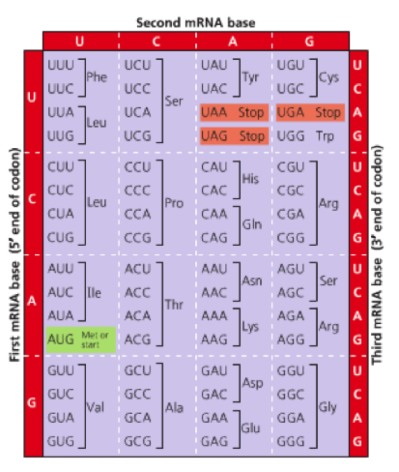Cracking The Genetic Code Movie Worksheet
Image Credit: National Human Genome Research Institute Introduction DNA is the material inside the nucleus of cless that carries genetic information. Google Sketchup Pro For Android Free Download. The entire package of genetic material for a living organism is called the genome. In trying to crack the human genetic code, the goal was to create a directory of genes that could be used to answer questions such as what specific genes do and how they work. Exploration Read the article to learn how the human genome has revealed a few surprises. As directed on the student sheet,, you will write a feature article about the Human Genome Project.
Visit the following websites to research and gather information to use when writing your article. The website is a great resource for information about the Human Genome Project. If you would like a review on the basics of DNA, chromosomes, and genes, visit.
Otherwise, start with,. Is a movie that is about 5 minutes long and provides a good overview of the Human Genome Project. Now view the multimedia video series,.
Fake News Papers Fake News Videos. A Few Abbreviations.

Going Further • • This esheet is a part of the lesson.
NOVA Online Teachers Classroom Activity Cracking the Code of Life PBS Cracking the Code of Life Classroom Activities Case Studies Case Studies Objective To help students understand the ethical, legal, and social issues behind the Human Genome Project. • copy of 'Case Studies' student handout ( or ) • Organize students into groups and distribute the 'Case Studies' student handout to each group. • Assign Case Studies to various groups and have students work in their groups to answer the questions associated with each case study. • Once students are done have them report their work to the class and have a class discussion about each of the issues. Ethical issues deal with what is moral or right. Legal issues address laws or regulations that may be set up to protect society members. And social issues look at how society and its individuals will be affected by certain decisions.
There are no right or wrong answers when societal issues are debated, but rather many different opinions about what is best ethically, legally, and socially. Talking about genetics can be emotional for students. Be sensitive to students' answers.
Be sure to consider all points of view. Books Baker, Catherine. Your Genes, Your Choices: Exploring the Issues Raised by Genetic Research. Washington, D.C.: AAAS, 1999. Describes the Human Genome Project, the science behind it, and the ethical, legal, and social issues raised by the project.
Marshall, Elizabeth L. The Human Genome Project: Cracking the Code Within Us.
Minneapolis, MN: Econo-Clad Books, 1999. Explores the process and technology used in sequencing a portion of the human genome.
A chance to see the process of science through the eyes of the scientist. The author connects the discoveries in the human genome with the ethical implications they pose for society. Reilly, Philip R. Abraham Lincoln's DNA and Other Adventures in Genetics. Cold Spring Harbor, NY: Cold Spring Harbor Laboratory Press, August 2000. Offers wide-ranging tales of crime, history, illness, and ethics to illustrate principles and issues of human genetics.
Rosalind Franklin and DNA. New York, NY: W.
Norton & Company, Inc., July 2000. Offers a true life account of Franklin's work in elucidating the structure of DNA and explores the difficulties often faced by women in science. Franklin's research was central to the Nobel Prize-winning discovery of DNA, and Watson and Crick's discovery relied heavily on her pivotal X-ray crystallography data.
Watson, James D. The Double Helix: A Personal Account of the Discovery of the Structure of DNA. New York, NY: Simon & Schuster, 1998. Chronicles the original story behind the race to discover the structure of DNA as seen through the eyes of James Watson. Articles Crick, Francis, and James Watson. 'A Structure of Deoxyribonucleic Acid.' 1953, Pages 737-738.
The seminal paper on the discovery of the structure of DNA. 'Outlook 2000: Inventing the Future.' News & World Report, January 3, 2000. Special double issue includes different articles about the Human Genome Project, which explain how the secrets of DNA may help cure illnesses and arrest aging, as well as outline the benefits and perils of genetic testing. Web Sites NOVA Online—Cracking the Code of Life Provides program-related articles, interviews, interactive activities, resources, and more.
Adobe Acrobat Reader 8 Free Download For Windows Xp. Genes and Disease Shows what diseases have been mapped on which chromosomes. The Map Viewer presents a graphical view of the available human genome sequence data as well as cytogenetics, genetic, physical, and radiation hybrid maps.
The Human Genome Project Provides background information on the Human Genome Project from the National Human Genome Research Institute. Several links provide more detailed resources describing the history and goals of the Human Genome Project. Genetics Resources Offers list of links with descriptions to more specific subject areas in the topic of genetics and medicine.
The 'See Your DNA' and 'Mystery Message' activities and the 'Case Studies' activities align with the following National Science Education Standards: Science Activities: Grades 5-8 Science Standard C: Life Science Reproduction and Heredity Molecular Basis of Heredity Case Studies: Grades 5-8 Science Standard F: Science in Personal and Social Perspectives Science and Technology in Society Case Studies: Grades 9-12 Science Standard F: Science in Personal and Social Perspectives Science and Technology in Society Cracking the Code of Life Original broadcast: April 17, 2001.